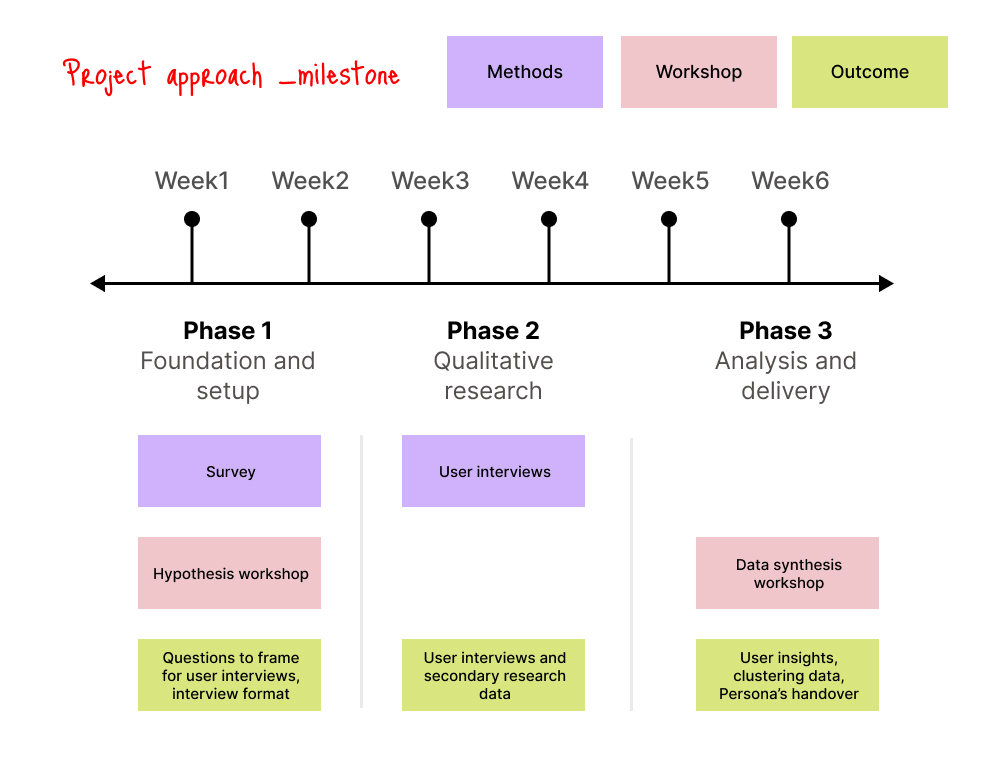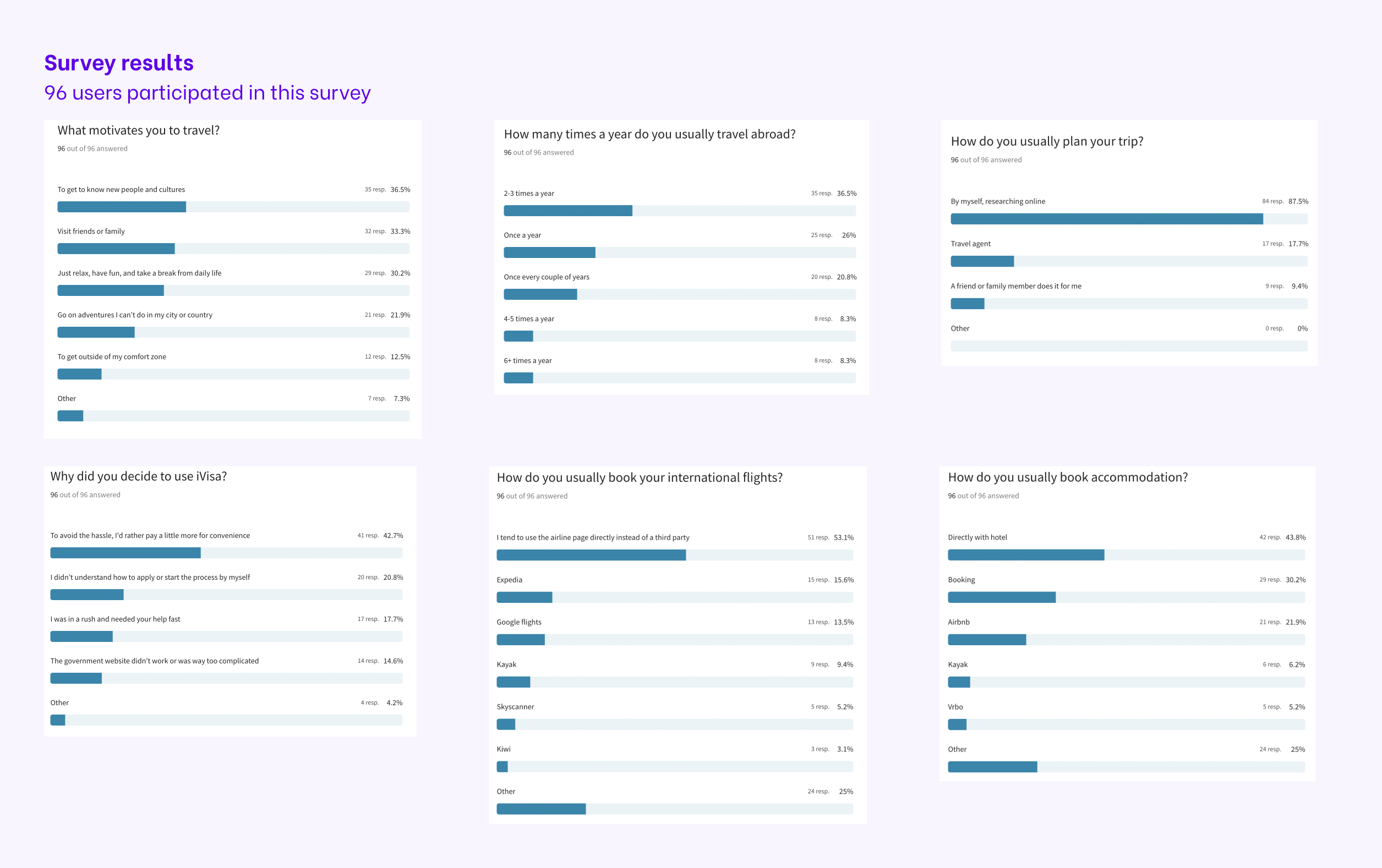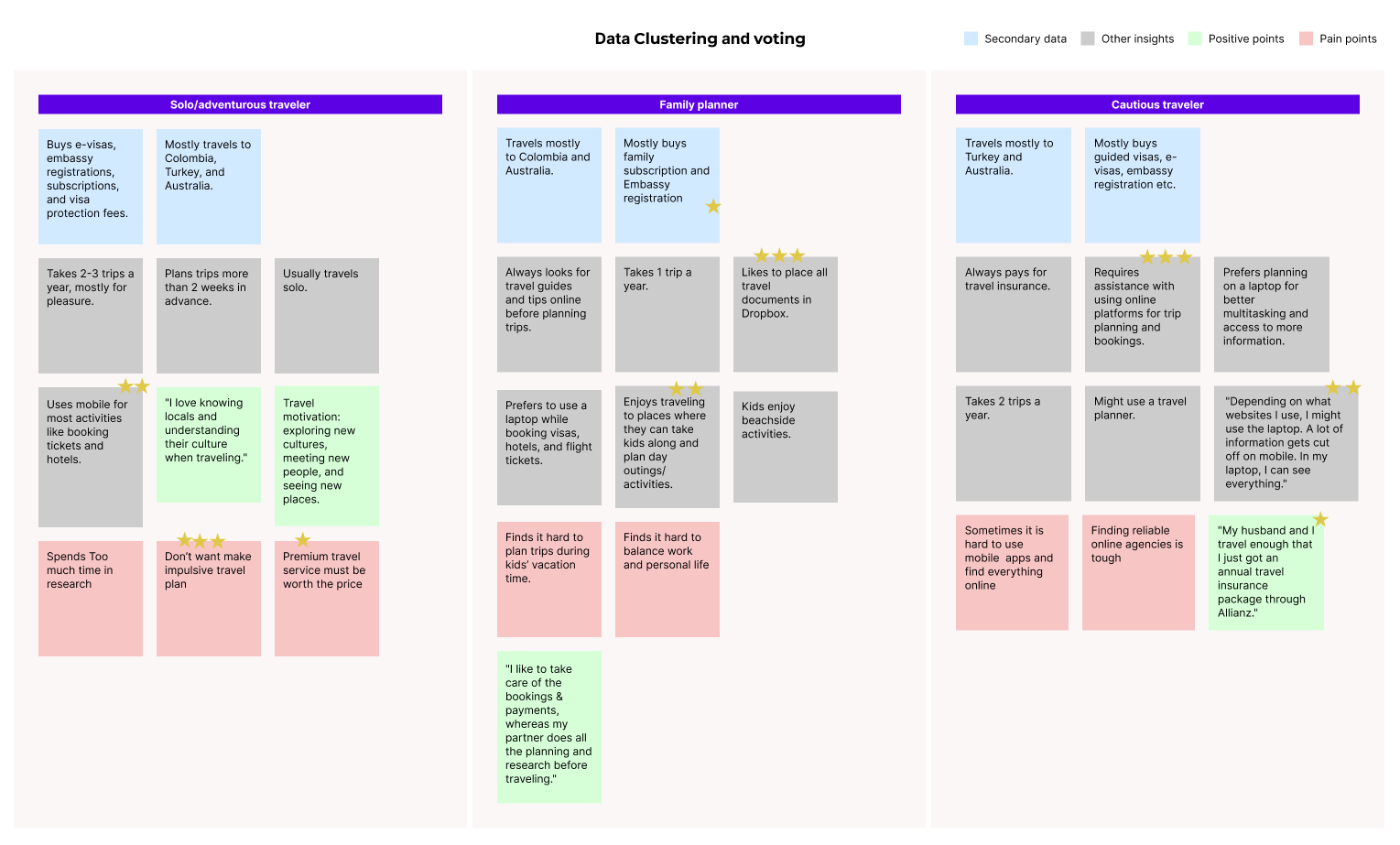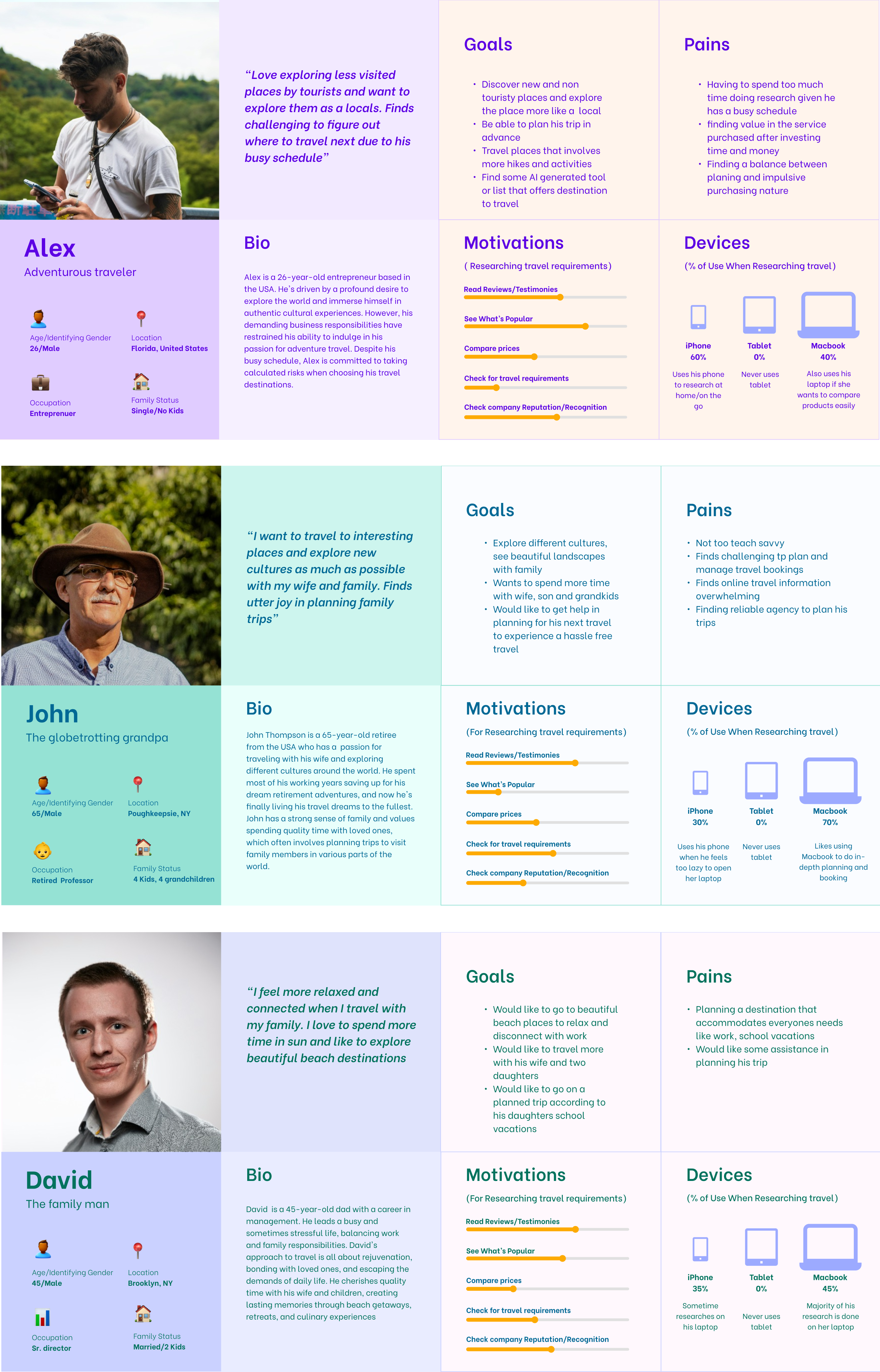Defining iVisa's Personas
Traveling is exciting, but getting a visa? Not so much. That’s where iVisa steps in, streamlining the process for users by helping them obtain essential travel documents like visas, e-visas, passport renewals, and health declarations through its smart photo upload feature and quick response time.
Overview
Traveling is exciting, but getting a visa? Not so much. That’s where iVisa steps in, streamlining the process for users by helping them obtain essential travel documents like visas, e-visas, passport renewals, and health declarations through its smart photo upload feature and quick response time.
Problem
After the 2020 pandemic, iVisa saw a surge in visitors and visa applications during 2022-23. To further expand its user base and address a wider range of needs, iVisa required a deeper understanding of its audience. While they were confident in their product’s ability to simplify travel, they lacked clear insights into their key user segments. I was tasked with leading this research to define iVisa’s user personas.
Research Approach
I conducted stakeholder interviews, sourced and interviewed participants through userinterviews.com along with other research members , synthesized research results into insights, authored a report, and presented findings.
As the project lead, I was responsible for all user research activities and led all the workshops. I decided to break the research into three phases:
1. Project foundation and survey
2. User interviews
3. Data analysis, data compilation and handover
Upon completing these phases, I consolidated the findings into a comprehensive template and handed it over to the research team, product managers, and key stakeholders.

Expected outcome
As a result of these personas, we expect the team to be able to plan features and communicate more clearly. Helping teams speak a common language should help iVisa better serve customers and achieve their business objectives.
Phase 1
Speaking with Stakeholders and Product managers
I organized a workshop with key stakeholders and product managers to gather their thoughts, ideas, and concerns regarding the research, and to document all hypotheses related to the personas.
Creating survey questions and launching it
For an in-depth look at user behavior, travel habits, and planning processes, I conducted a survey among iVisa's customers. Using the Typeform app, I developed key research questions with my research team (shown below). We distributed this survey to 100 users in order to collect quantitative data to complement our qualitative data.

Phase 2
User interviews
The survey data helped us refine the questions for the 1: 1 user interviews. To gain deeper insights into user behaviors and travel habits, we decided to interview iVisa customers and also recruited users online based in US, UK, and Canada, aged between 24-65. We conducted a total of 20 one-on-one interviews on userinterviews.com platform. Each interview was carried out by a two-person team from the research group, with one person acting as the interviewer and the other as the note-taker. For note-taking support, we enlisted two UI designers and recorded all the sessions. The videos and transcripts from these interviews were then shared with the research team and key stakeholders.
Phase 3
Insights synthesis
I led a workshop with the research team to analyze the gathered data. Participants categorized insights based on secondary data, positive feedback, pain points, and other key factors. Together, we clustered this information into key themes, which led to the identification of our user personas: Solo Traveler, Family Man, and Cautious Traveler—later refined as ‘Globetrotter Grandpa.’ These findings were presented to key stakeholders, sparking discussions on how they could be applied across various work areas.

Personas framework and handover
The personas were delivered as a Figma file, ensuring they can be easily accessed, referenced, and edited over time. Our goal is for stakeholders across the business and product teams to use these personas to make informed decisions.

Constrains
- Budget limitations required us to streamline our research approach by prioritizing critical user experience aspects. We replaced extensive in-person interviews with remote usability testing and online surveys.
- Time zone differences prevented some project managers from directly interviewing users. To address this, I collaborated with two UI designers who assisted with note-taking and asking key questions during sessions.
What I learned
- I am grateful for the opportunity to work on a project like this and have learned a lot from it. A few of the highlights of what I learned are below.
- After the user interviews, coordinating with the research team and brainstorming proved challenging due to rescheduled meetings, managing time differences, etc. In order to resolve this, I shared the insights figjam file with the team and asked them to write their insights and conducted a quick voting session to narrow down the insights. This enabled us to create personas quickly.
- The research insight led to the creation of eight personas. My concern was that the product team and other teams would find this confusing. Hence, I set up a call with the key research team members and stakeholders to identify commonalities, merge them, and discard the ones that are not so important for now. As a result, we created 3 personas that best represented our customers.



